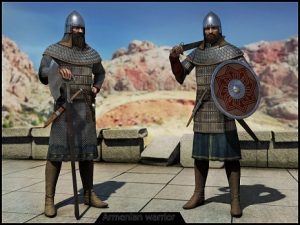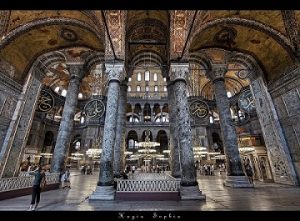
Few persons know that they carried a lantern of light in the Byzantine Empire throughout its history.
The Byzantine Empire was multi-cultural. Nations and races were united under the Greek language, civilization and Orthodox faith. “Due to centuries of foreign domination, much of Armenian history has been neglected,” according to People of Far. “As such, much of the influence Armenians had on the Byzantine empire has been swept under the rug by the Ottomans and later the Soviets. Nevertheless, the contributions of Armenian people to the Byzantine empire has been more than significant”.

As the historian P. Charanis said, “the important role played in the history of Byzantium by that talented minority, the Armenians, has been generally unrecognized”. Even though Armenia was only in part a vessel of Byzantium, many Armenians became successful in the Byzantine Empire. From bishops, architects, important military figures and even Emperors, Armenians were represented in all walks of Byzantine life. In fact one out of five Byzantine emperors and empresses were ethnically full or in part Armenian.”

The best example of this is Emperor Heraclius, whose father was Armenian and mother Cappadocian. Emperor Heraclius began the Heraclean dynasty (610-717 A.D.).The Akathistos Hymn sung during Orthodox Lent commemorates his victory and saving of Constantinople with the help of Our Lady, Virgin Mary.
Basil, “The Bulgar slayer” became one of the strongest Byzantine emperors, winning territory in the Balkans, Mesopotamia, Armenia and Georgia. He was noted for his victory (1014) and increased his domestic authority by attacking the landed interests of the military aristocracy and of the church.

The Armenian military power, to some scholars, was the basis of the stability and longevity of Byzantium. A strong army was needed, Armenia was the source, from the 5th century forward, the Armenians were regarded as the main constituent of the Byzantine army.
In the article, “Armenia, Byzantium, and the Byzantine Armenians”, “another example of the impact of Armenians within the Byzantine Empire is the Great Church known as Hagia Sophia. There was a devastating earthquake on October 25, A.D. 989, which ruined the great dome of Hagia Sophia. After the disaster, the Byzantine emperor Basil II, asked for the Armenian architect Trdat (or Tiridates), creator of the great churches of Ani and Agine, to repair the dome.

The magnitude of the destruction in the church caused reconstruction to last six years. The church was re-opened on May 13, 994. The magnificent reconstructed dome designed by Trdat in the tenth century remains aloft the “Great Church” to this day.”
We must not only remember the 100 year genocide, but the unique contribution of Armenians as carriers of the Greek language, civilization and Eastern Orthodoxy.
See all the latest news from Greece and the world at Greekreporter.com. Contact our newsroom to report an update or send your story, photos and videos. Follow GR on Google News and subscribe here to our daily email!



